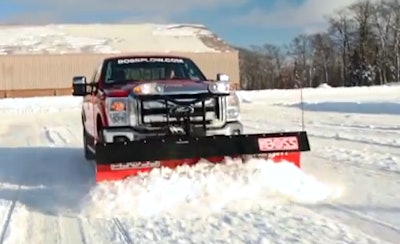
“Very few of our customers are snow contractors only,” says Jodie Gilroy, marketing specialist at The Boss Snowplow. “In most cases, it’s landscaping in the summer and snow removal in the winter.”
The Boss, based in Iron Mountain, Mich., sells its snowplows as far south as Oklahoma. Along with contractor fleets both large and small, the company’s range of products is used by municipalities as well as homeowners.
And given all the crazy weather in the past couple of years, it’s hard to predict who needs to add snow-removal tools to the equipment shed.
“Anybody that has to get the job done should have a snowplow,” Gilroy says. “Whether they have it frequently or not, somebody needs to remove the snow when it does fall. People can’t shut down for two or three days waiting for snow to melt.”
She also suggests that contractors able and willing to travel to less-prepared areas “can make good money” picking up new accounts.
In addition to snowplows made for trucks, contractors with light utility vehicles in the fleet can choose an appropriately sized plow for smaller jobs, such as sidewalk snow removal – saving a crew’s time, and their backs.
But Gilroy cautions that most snowplows are designed with a purpose, and contractors should be careful about assigning double-duty, such as moving dirt in the summer.
As for the fast-approaching winter, The Boss recommends that a pre-season plow inspection include:
- Changing the hydraulic fluid.
- Greasing the vertical pin (on v-plows) and other important wear points.
- Clean, inspect and grease all electrical connections.
- Check all nuts and bolts for tightness.
- Check the plow cylinders, hoses and pump for leaks
- Tighten the trip and return springs.
- Inspect all welds in plow structure and vehicle mount.
- Inspect and re-torque all fasteners on the vehicle mount.
- Inspect the lights and properly adjust and align the plow lights.
- Make sure all plow functions work properly.








